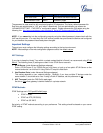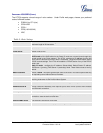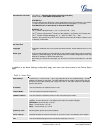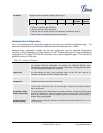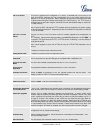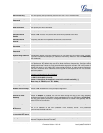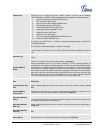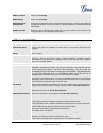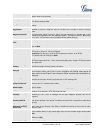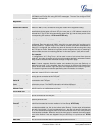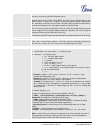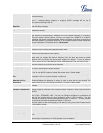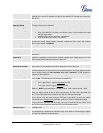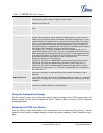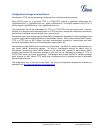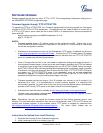
Grandstream Networks, Inc. HT-70X User Manual Page 25 of 35
Firmware Version 1.0.0.18 Last Updated: 03/2012
request to indicate the E.164 number. If server supports TEL URI format, then this
option needs to be selected.
SIP Registration
Controls whether the HT701 needs to send REGISTER messages to the proxy server.
The default setting is Yes.
Unregister on Reboot
Default is No. If set to Yes, the SIP user’s registration information will be cleared on
reboot.
Outgoing Call without
Registration
Default is No. If set to “Yes,” user can place outgoing calls even when not registered (if
allowed by Internet Telephone Service Provider) but is unable to receive incoming
calls.
Register Expiration
This parameter allows the user to specify the time frequency (in minutes) the HT70X
refreshes its registration with the specified registrar. The default interval is 60 minutes
(or 1 hour). The maximum interval is 65535 minutes (about 45 days).
Registration Retry Wait
Time
Retry registration if the process failed. Default is 20 seconds.
Local SIP port
Defines the local SIP port the HT70X will listen and transmit. The default value for FXS
port is 5060.
Local RTP port
Defines the local RTP-RTCP port pair the HT70X will listen and transmit. It is the base
RTP port for channel 0. When configured,
channel 0 uses this port _value for RTP and the port_value+1 for its RTCP
The default value for FXS port is 5004.
Use Random Port
Default is No. This parameter forces the random generation of both the local SIP and
RTP ports when set to Yes. This is usually necessary when multiple HT70X are behind
the same NAT.
Refer to Use Target
Contact
Default is No. If set to YES, then for Attended Transfer, the “Refer-To” header uses the
transferred target’s Contact header information.
Transfer on Conference
Hang up
Default is No. In which case if the conference originator hangs up the conference will
be terminated. When option YES is chosen, originator will transfer other parties to
each other so that B and C can choose to either continue the conversation or
hang up.
Enable Ring-Transfer
Default is No, this will create a Semi-Attendant Transfer. When set to Yes, device can
transfer the call upon receiving ring back tone or SIP message 180.
Disable Bellcore Style
3-Way Conference
Default is No. you can make a Conference by pressing ‘Flash’ key. If set to Yes, you
need to dial *23 + second callee number.
Remove OBP from
Route Header
Default is No. When option YES is chosen, the Out Bound Proxy will be removed from
Route header.
Support SIP Instance ID
Default is Yes. If set to Yes, the contact header in REGISTER request will contain SIP
Instance ID as defined in IETF SIP Outbound draft.
Validate incoming SIP
message
Default is No. If set to yes all incoming SIP messages will be strictly validated
according to RFC rules. If message will not pass validation process, call will be
rejected.
Check SIP User ID for
incoming INVITE
Default is No. Check the incoming SIP User ID in Request URI. If they don’t match, the
call will be rejected. If this option is enabled, the device will not be able to make direct
IP calls.
Allow Incoming SIP
Messages from SIP
Proxy Only
Default is No. Check the incoming SIP messages. If they don’t come from the SIP
proxy, they will be rejected. If this option is enabled, the device will not be able to make
direct IP calls.
SIP T1 Timeout
T1 is an estimate of the round-trip time between the client and server transactions.
If the network latency is high, select larger value for more reliable usage. Default is 0.5
Sec.
SIP T2 Interval
Maximum retransmission interval for non-INVITE requests and INVITE responses.
Default is 4 Sec.
DTMF Payload Type
Sets the payload type for DTMF using RFC2833. Default is 101.



